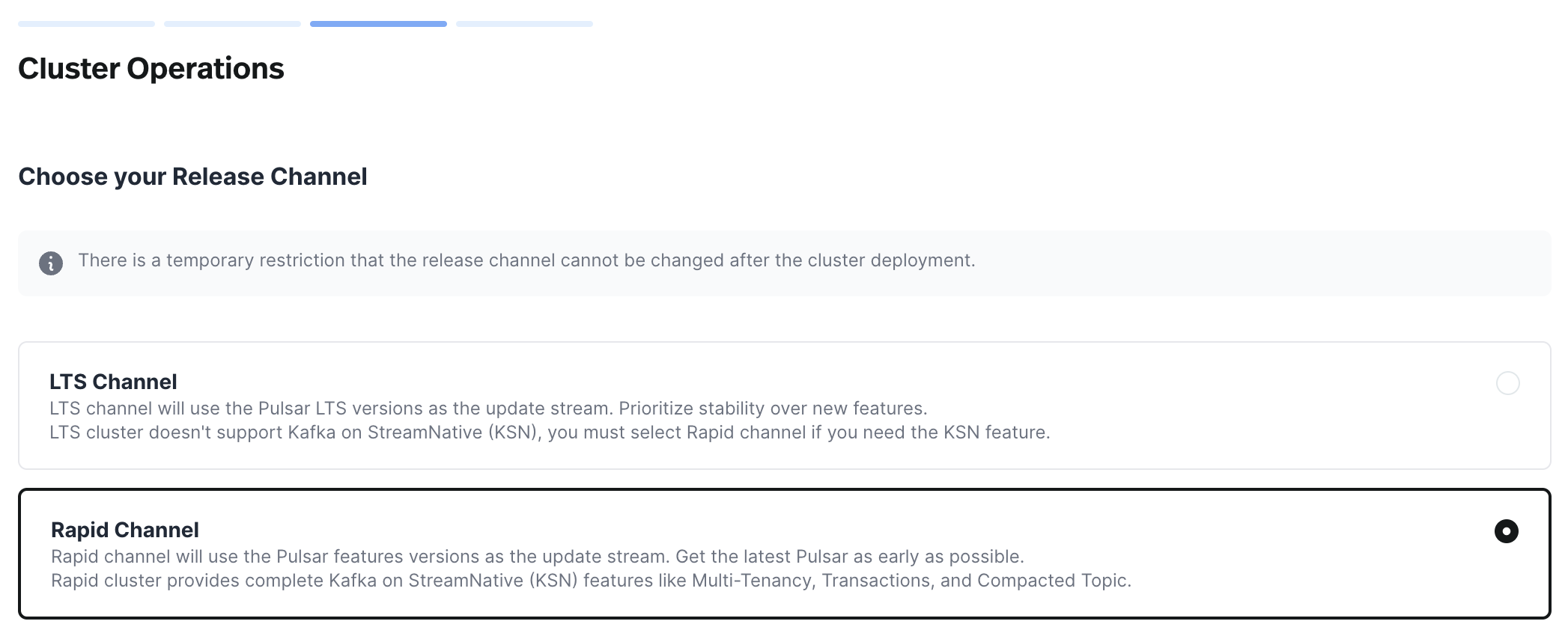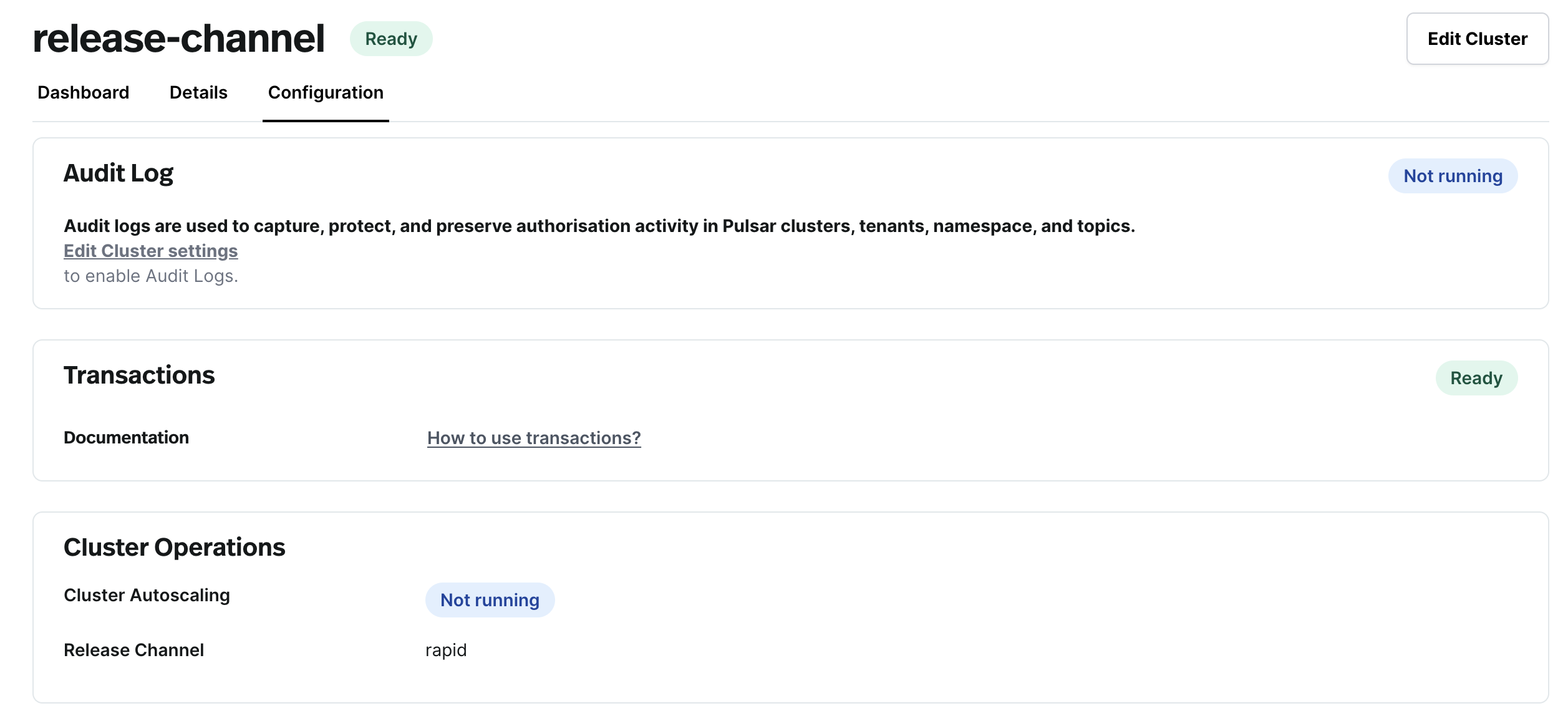Introduction
Release channels in our platform provide users with the flexibility to choose between two main update streams: LTS (Long-Term Support) and Rapid. The LTS channel focuses on stability and long-term support, making it ideal for production environments that require minimal disruption. On the other hand, the Rapid channel offers access to the latest features and improvements at a faster pace, suitable for users who prioritize innovation and can adapt to frequent updates. This document aims to clarify the differences between these channels, helping users make informed decisions based on their specific requirements and use cases.Release Channel Overview
| Release Channel | Current version in channel |
|---|---|
| Rapid channel | 4.1.0.7 |
| LTS channel | 4.0.7.1 |
LTS (Long-Term Support) Channel
- LTS releases prioritize stability and long-term API consistency.
- New features are introduced on a slower cadence.
- Non-GA (Generally Available) features are not accessible in LTS releases.
- LTS releases are recommended for production workloads and environments requiring stability and minimal disruption.
Rapid Channel
- Rapid releases offer access to the latest features and improvements at a faster pace.
- New features are introduced approximately every three months.
- Users can access features in Private Preview or Public Preview through controlled flags.
- Rapid releases are suitable for users who prioritize innovation, are willing to adapt to frequent updates, and can accommodate potential changes in features and APIs.
Channel limitation
- LTS channel clusters can’t access the Private Preview or Public Preview features.
- There is a temporary restriction that the release channel cannot be changed after the cluster deployment. If you want to upgrade a cluster to a different release channel, please reach out to the StreamNative support team.
Choose the release channel
- Console
- snctl
- Terraform
In the cluster provision process, there is a new step for selecting the release channel:



Key Considerations
Stability
- Both LTS and Rapid channels provide stable releases.
- Stability is not compromised in either channel; the primary difference lies in the frequency of feature updates.
Feature Availability
- LTS: Prioritizes stability over feature availability, with new features introduced on a yearly basis.
- Rapid: Offers the latest features and improvements every three months, allowing users to access cutting-edge functionalities.
Support
- Both LTS and Rapid channels receive support.
- Users can expect assistance and maintenance regardless of the chosen release channel.
Compatibility
- Rapid releases eventually transition into LTS releases, ensuring compatibility and forward version upgradeability.
- Users need to consider compatibility when selecting the appropriate release channel, especially for long-term projects and deployments.
Recommendations
- Active Development Projects: The Rapid release channel is recommended for projects that are actively evolving and require access to the latest features and improvements.
- Stable Environments: The LTS release channel is suitable for stable environments and production workloads where long-term stability and minimal disruption are paramount.
Best Practices
- Clear Channel Mapping: Ensure a clear mapping of clusters to different release channels, especially in environments with multiple Pulsar clusters.
- Communication and Training: Educate users about the implications of choosing between LTS and Rapid channels, including potential impacts on development workflows, feature availability, and long-term support.
- Continuous Integration and Deployment (CI/CD): Incorporate release channel selection into CI/CD pipelines to ensure alignment with project requirements and compatibility considerations.